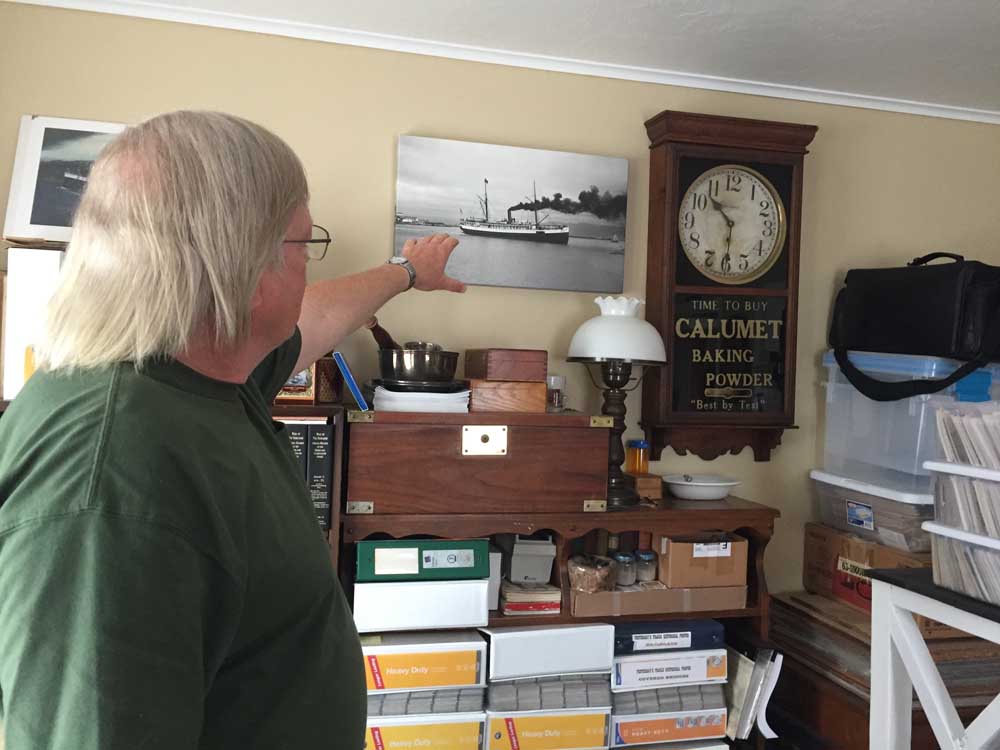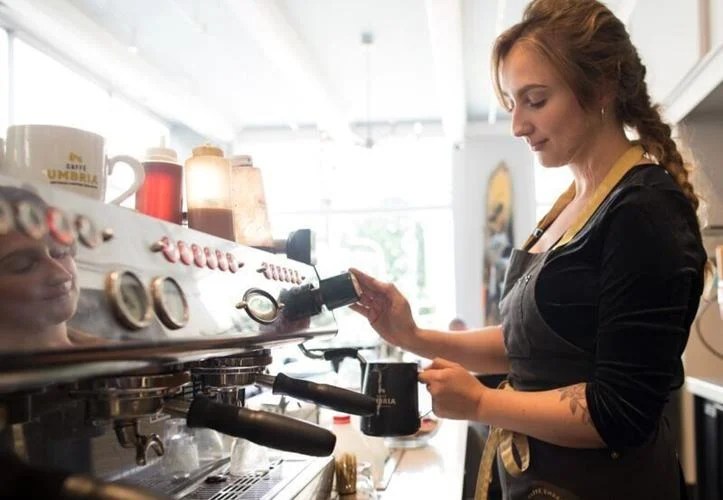Seen from Seaside: Region’s history provides inspiration for photo restorationist
Published 4:40 pm Friday, August 27, 2021

- Bruce Andrews in his office, pointing to one of his nautical restorations. This is the S.S. Corona, which sank at Humboldt Bay in 1907.
The stunning photographic renditions of the Prom from 100 years ago owe their beauty not only to the intrepid photographers of the time, but to the man who helped them find a new life.
Photo restorationist Bruce Andrews archived century-old museum negatives and photographs and restored them to a crisp and brilliant freshness.
He works from his house on S. Edgewood Street, in front of a large computer and surrounded by boxes of postcards, prints and negatives.
“I’ve done photo restorations for over 25 years,” Andrews said. “I started out doing my own photos, and collected a goodly amount of negatives and slides that folks have either discarded, abandoned or I fished out of the garbage, dirty beyond measure. People didn’t know who or what they were.
“I guess it was partly due to my feeling that as a photographer myself, the people who took these images originally took them because they meant enough to them to capture a special image that would never be able to be recaptured again.”
A passion
Andrews, who grew up on a farm in Wasco and later moved to Portland, always had a passion for photography, inspired by his parents and grandparents. His mother presented him his first camera at 7.
She soon regretted it, he said, because of how fast he would burn through a roll of film and the cost of processing.
“One thing I learned real early was composition from them,” Andrews said. “A lot of people just go in and take snapshots. “My mom said, ‘Get the angle that nobody sees.’”
Andrews briefly considered a career in orthopedic medicine, but joined the railroad industry instead.
“I ended up 30 years working for the railroad as a — you name it: switchman, weigh master, art office, dispatching — just about everything except drive an engine.”
Through his travels, he would discover caches of historic photos, slides and negatives. Many were damaged, discolored, dirty and discarded.
“People either didn’t want them anymore, didn’t know anything about them or thought they were unsalvageable because of the degree of damage,” Andrews said.
At a garage sale, he stumbled on a box of glass plates and film negatives. “I said, ‘You guys aren’t throwing that out, are you?’ Long story short, they said, ‘If you want to, take them.’ So I did.”
Absorbing lessons from others, he developed his own technique to work with glass plates and negatives.
“I had some trial and error,” he said. “I learned what not to do and what worked.”
Finally, he came up with his own solutions for bringing old photos back to life.
“I call it my own Colonel Sanders’ recipe. The goal is as clean a negative or slide as I could get. I wanted antique images, not antique dirt.”
Andrews and his wife, Debbie, moved to Seaside in 2010, giving up a 5-acre farm in the Willamette Valley for a place by the ocean.
“My wife and I came down here every year of our married life for 47 years,” he said. “We loved coming here, but never managed to find a place. We just happened to be walking down the street one day and we saw a ‘for sale’ sign on this place.”
History buff
A history buff, he made contact with Steve Wright, a city councilor and president of the board for the Seaside Museum and Historical Society. He volunteered to go through their collections.
“Steve found out what I do,” Andrews said. “He mentioned that they had no one managing the photo archive at the museum and he allowed me to have a look at the photo room, which was a royal disaster, and also the Montag plates that they had.”
Andrews is referring to William J. Montag, a photographer whose work remains a basis for a lot of the museum’s images.
Montag started as a barber at the Seaside House on the golf course in the 1890s before opening the city’s premier photo business on the Prom.
Andrews suggested a few things that should be changed to help the museum better protect the deteriorating negatives.
“Long story short, before I knew it, sweet-talking Steve had me as the guy in charge of the museum’s photo archive,” he said.
Andrews’ photo restorations aim to educate as well as visually entertain.
“One of the things that makes me different than a lot of other people is the fact that I will go in and I want to research,” he said. “I want to know the history. If you’ve seen my stuff up there, you know, I write a pretty good caption.
“That’s because I want to flesh out that particular image. I want people to know what that image was and why it was great. To make sure it’s not totally lost in history, that it’s going to stay here.”



